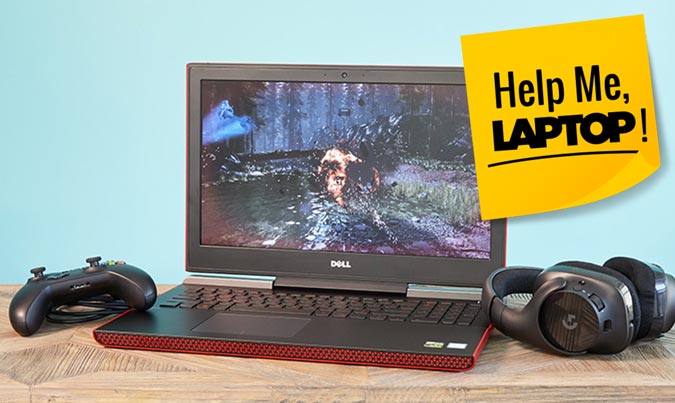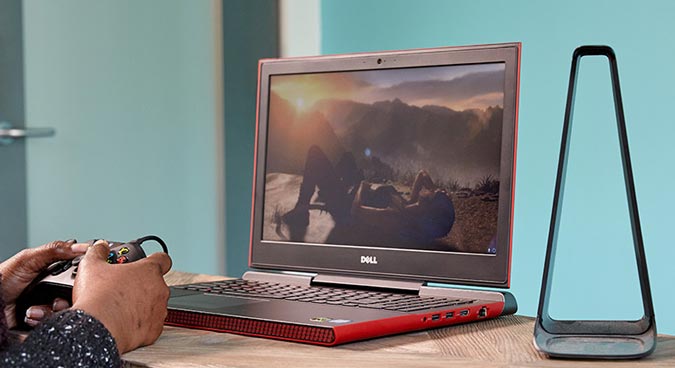Help, Me Laptop: How Do I Get Smoother FPS While Gaming on a Budget?
We love gaming laptops at Laptop Mag. They're powerful, often stylish, and you see some of the most absurd innovations tried out s on these beefy machines first. Oh, and they play games well.
But they're not all created equal, and they're not all as consistent as a console. When you get a gaming laptop, you have to consider not only specs but the settings you’ll play your games on.This week, forum user rexisafighter asked why their laptop is getting low frame rates on a Dell Inspiron 15 7000 Gaming with a GTX 1050 Ti and an Intel Core i7-7700HQ CPU. Sounds powerful, right? But there are a lot of reasons this particular machine might not be reaching its potential.
Budget Cards
The GTX 1050 Ti is a good card, especially for those on a budget. But of Nvidia's Pascal GPUs, the 1050 Ti is just one step above the bottom-of-the-barrel option, the GTX 1050. When we compared the two cards, we found the 1050 Ti played games at faster frame rates, but it, like its little sibling, isn't powerful enough for graphically intensive games at high settings.
MORE: The Best Gaming Laptops
The 1050 and 1050 Ti also aren't VR ready, so don't expect to use them with a Vive or Rift.That's not to say the cards can't be a good value. In fact, they're usually what you find in gaming laptops that cost around $1,000. But as you get more powerful — GTX 1060, 1070 and 1080, you get more powerful cards that easily leapfrog the 1050s.
Settings
So there are a few things to change for better frame rates. The first one is your expectations. See, rexisafighter will not play games on ultra settings at 2560 x 1440. But with some tweaking, he or she can get something buttery smooth.Resolution's a big one. This particular laptop maxes out at 1080p, but if you're using an external monitor there's a chance it could go higher. Don't push it. 1080p is fine, especially for an Nvidia GTX 1050 Ti card.
Presets may be your friend. In our experience, medium and high presets have often worked well on the GTX 1050 Ti, though if you wanted to crank the frame rate up higher, you could lower some settings.
Sign up to receive The Snapshot, a free special dispatch from Laptop Mag, in your inbox.
Of course, PC gamers love to tweak. First, try fiddling with anti-aliasing. MSAA (multi-sample anti-aliasing) is a common option that should work with most graphics cards, so you might want to give that a shot. FXAA (fast approximate anti-aliasing) is also an efficient method, though you may see some blurry details.
There are a whole bunch of quality settings for games, and they're hardly universal. You'll need to fiddle in every game. Try turning down shadows, motion blur and textures. It won't look as good, but, hey, you're going for smooth frame rates, not good looks, right?
Minimum Requirements
Another aspect to this question is the game you're playing. Every game has different minimum and recommended requirements. You'll find these on Steam or any website where you can buy digital download codes. Be aware of these. They're good guidelines, and they will let you develop expectations on how your laptop will run the game.
We consider the minimum playable frame rate for a game to be 30 fps, though most gamers prefer 60 fps at 1080p.
Bottom Line
Your gaming PC requires a bit of experimenting to see how it plays games best. And you'll need to do this for every game. It's part of the joy of owning a laptop. And if you get a budget laptop, there are sacrifices to be made. But once you figure it out, you'll fall into a rhythm and know what settings you need to change in order to hit that glorious 60 fps.
Credit: Jeremy Lips/Laptop Mag
Andrew is a contributing writer at Laptop Mag. His main focus lies in helpful how-to guides and laptop reviews, including Asus, Microsoft Surface, Samsung Chromebook, and Dell. He has also dabbled in peripherals, including webcams and docking stations. His work has also appeared in Tom's Hardware, Tom's Guide, PCMag, Kotaku, and Complex. He fondly remembers his first computer: a Gateway that still lives in a spare room in his parents' home, albeit without an internet connection. When he’s not writing about tech, you can find him playing video games, checking social media and waiting for the next Marvel movie.


